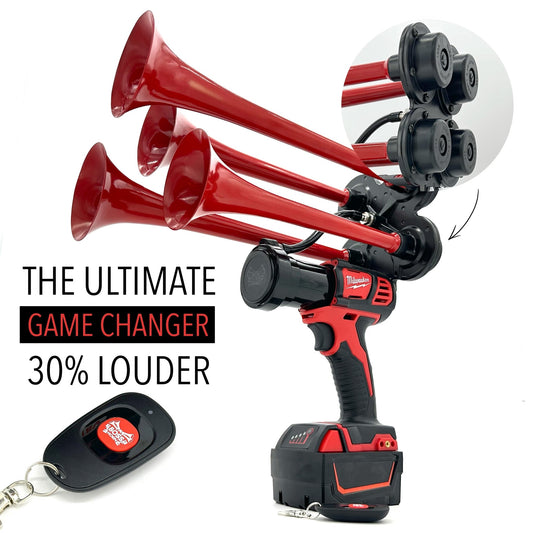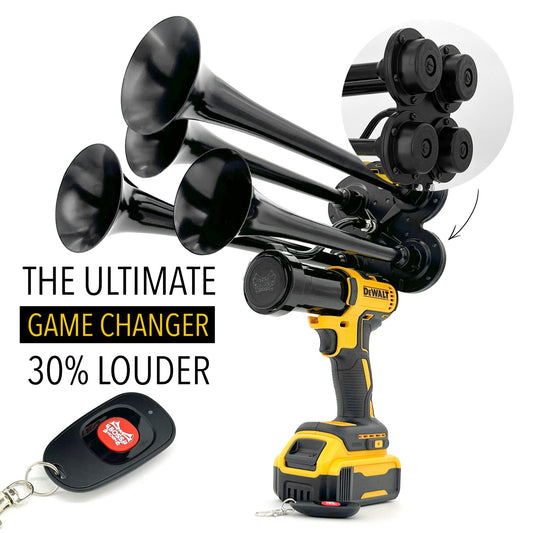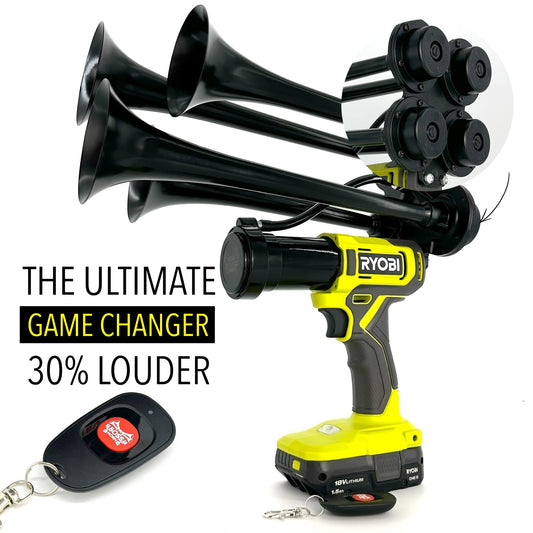Car horns are undoubtedly one of the most recognizable sounds on the road. From ancient times, humans have utilized sound-signaling devices to communicate danger, alert others of their presence, or convey important messages. Consequently, over the years, car horns have evolved to become a vital component of modern automobiles, ensuring safety and maintaining traffic flow.
Since the inception of automobiles in the late 19th century, car horns have rapidly developed and adapted to meet the needs of an ever-expanding transportation system. Originally, these signaling devices consisted of simple bulb horns that emitted a loud and distinctive sound. As technology progressed, drivers sought more efficient and reliable solutions, leading to the introduction of electric horns in the early 20th century. These horns, powered by electricity, provided a more consistent and penetrating sound.
Interestingly, the decibel level of a car horn is carefully regulated by traffic laws in many countries, ensuring that it remains effective without causing excessive noise pollution. Excessive noise can not only disturb the peace but also pose a threat to the environment and public health. In this context, regulations are in place to strike a balance between safety and noise control.
While the precise decibel level varies between different car models and jurisdictions, car horns generally produce around 100 to 110 decibels of sound. To put this into perspective, the average conversation between people typically measures around 60 decibels, and a rock concert often exceeds 120 decibels. Therefore, car horns are designed to emit a sufficiently loud sound to be heard over other ambient noises on the road, ensuring that warnings and alerts are not easily ignored.
It is worth noting that the primary purpose of a car horn is to communicate with other drivers or pedestrians in potentially dangerous situations. Their distinctive sound acts as a universal language, notifying nearby individuals of possible hazards or seeking attention when necessary. Through this effective method of communication, car horns have undoubtedly contributed to reducing accidents and maintaining order on the roads.
Given their essential role in road safety, it is crucial for drivers to recognize the importance of properly functioning car horns. Regular maintenance and checks should be conducted to ensure that the car horn is in optimal condition, ready to perform its intended function whenever required.
In conclusion, car horns have come a long way since their inception, evolving into a vital safety feature on roads worldwide. While the precise decibel level may vary, car horns generally emit a sound level of around 100 to 110 decibels, ensuring their audibility in various traffic conditions. By understanding their significance and role, drivers can utilize car horns responsibly, contributing to safer road experiences for all.
How Many Decibels Does a Car Horn Produce?
Car horns are known for their attention-grabbing and piercing sound, but have you ever wondered just how loud they can get? The decibel (dB) scale is used to measure sound levels, and car horns fall within a specific range on this scale. Understanding the decibel rating of a car horn can shed light on the potential impact it has on our ears and overall safety. In the following sections, we will delve deeper into the dB levels of car horns, exploring their significance in various contexts and providing insights into the implications of loud car horns on noise pollution and communication effectiveness. Let's dive in!
Decibel Levels of Car Horns
When it comes to alerting others on the road, car horns play a crucial role in enhancing safety on the streets. But have you ever wondered how loud a car horn actually is? Let's explore the decibel levels of car horns and understand the impact they can have.
Understanding Decibels (dB)
Before delving into the specific decibel levels of car horns, it's important to understand how decibels are measured. Decibels, denoted as dB, are a unit used to quantify sound intensity. The decibel scale is logarithmic, meaning that small incremental changes in decibel levels represent significant variations in sound loudness. For example, an increase of 10 dB indicates that the sound has doubled in intensity.
Standard Decibel Levels
The decibel levels of car horns can vary depending on several factors, such as the type of horn, vehicle model, and manufacturer specifications. However, there are standard guidelines that help us understand the average sound intensity produced by car horns:
- Most car horns typically fall within the range of 100 to 110 dB.
- A car horn with a sound level of 100 dB is as loud as a motorcycle or a loud radio.
- A car horn with a sound level of 110 dB is comparable to a chainsaw or a rock concert.
Legal Limits and Regulations
In many countries, there are regulations in place to ensure that car horns do not exceed a certain decibel limit. These limits help prevent excessive noise pollution and maintain a peaceful environment.
For instance, in the United States, the maximum decibel level for car horns is around 120 dB. However, this can vary depending on the state and local regulations. It's crucial to adhere to these limits and not modify or install aftermarket horns that exceed the legal noise limits.
Considerations for Noise Pollution
While car horns are essential for communication and safety, it's crucial to use them responsibly. Unnecessary honking can contribute to noise pollution, inconvenience others, and even startle pedestrians or other drivers. Being mindful of the noise levels produced by car horns not only ensures compliance with regulations but also helps maintain a harmonious environment on the road.
Concluding Statistics
- On average, car horns have decibel levels ranging from 100 to 110 dB.
- In the United States, the legal limit for car horns is approximately 120 dB.
- Car horns with a sound level of 100 dB are comparable to a motorcycle or a loud radio.
- Car horns with a sound level of 110 dB are similar to a chainsaw or a rock concert.
https://youtube.com/watch?v=zAe9qvC49qY
FAQ: Car Horn Decibel Level
1. What is the decibel level of a typical car horn?
Car horn decibel levels can vary depending on several factors.
- Distinctive sound level is produced by car horns to grab attention.
- Regulations enforced on maximum allowable decibel levels for car horns.
- The decibel level of a typical car horn can be quite loud.
2. What determines the loudness of a car horn?
The loudness of a car horn is influenced by various factors.
- Sound output can depend on the design and size of the horn.
- The power of the car's electrical system affects the sound produced.
- The specific type of horn installed in the vehicle can impact its loudness.
3. Why are car horns so loud?
Car horns are intentionally designed to be loud for specific reasons.
- Loudness ensures that the horn can be heard in various conditions and environments.
- The loud sound of a car horn helps to capture immediate attention and alert others.
- In emergency situations, a loud car horn can potentially prevent accidents.
4. Are all car horns equally loud?
No, car horns can differ in terms of loudness.
- Some car models and types have louder horns than others.
- The sound output of a car horn can also be modified or adjusted by the driver or vehicle owner.
- In certain regions or countries, regulations may require car horns to meet specific loudness standards.
5. How does the decibel level of a car horn compare to other common sounds?
The decibel level of a car horn can be quite high compared to everyday sounds.
- The decibel level of a car horn can often exceed the sound levels made by conversations.
- Compared to a typical vacuum cleaner, a car horn can generate substantially higher decibel levels.
- In comparison to traffic noise, car horns can be considerably louder and more piercing.
It is important to note that specific car horn decibel levels can vary depending on the type of horn, the vehicle, and local regulations. The loudness of a car horn serves the purpose of grabbing attention and potentially preventing accidents. So, while we cannot provide an exact decibel measurement since car horns can vary, it is crucial to recognize that car horns are designed to be loud enough for their intended use.
Conclusion
- A car horn typically produces sound at a loudness level of 110 to 115 decibels (dB).
- The actual loudness of a car horn may vary depending on the specific make and model.
- Car horns are designed to be attention-grabbing and easily audible in various driving scenarios.
- Exposure to prolonged noise levels above 85 dB can lead to hearing damage, so car horn usage should be limited and used responsibly.
- The loudness of a car horn is an important safety feature that helps alert other drivers and pedestrians in emergency situations.
- It is crucial to abide by local regulations and laws regarding the use of car horns to avoid unnecessary noise pollution.
- Modern car horn designs incorporate features like dual-tone horns for a more distinct and noticeable sound.
- In recent years, there has been a trend towards developing car horns that are less irritating and more pleasant to the human ear.
- While car horns serve a vital purpose on the road, it is essential to use them sparingly and only when necessary to maintain a peaceful and safe environment.














